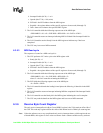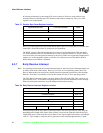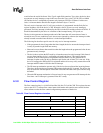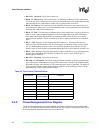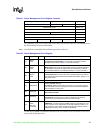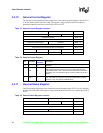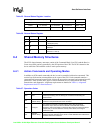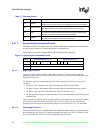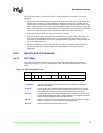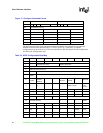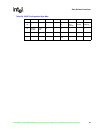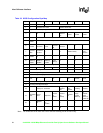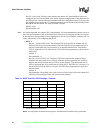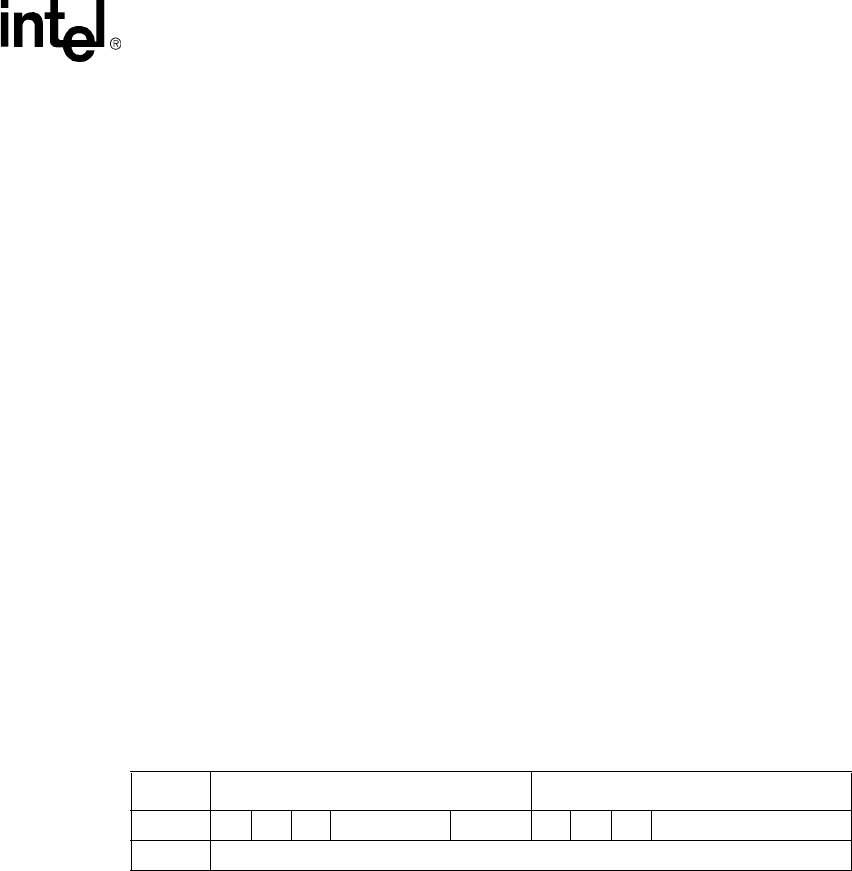
Intel 8255x 10/100 Mbps Ethernet Controller Family Open Source Software Developer Manual 59
Host Software Interface
The following sequence is performed by the CU at the completion of execution of an action
command:
1. The devices writes command specific status to the status word of the current CB (usually the C
and OK bits are written to). If the command is a transmit command, the C and OK bits are
updated when the last transmit buffer DMA has completed, not after the actual transfer of the
frame on the serial link. This allows the transmit buffer resources to be returned as soon as the
data is copied into the device internal transmit FIFO instead of waiting for actual transmission
on the wire. Transmit status is kept in the transmit statistical counters of the device.
2. If the I bit is set, the device sets a request for the CX interrupt.
3. If the EL bit is set, after completion of the command the CU becomes idle. If the S bit is set,
the CU becomes suspended. Otherwise, the CU requests the beginning of the next action
command. A transition from an active to suspended state also generates a CNA interrupt if the
device is configured to do so.
4. The device updates the status word in the SCB. (In step 1, the transmit command status is
actually set at the end of transmit DMA, not at the completion of the actual transmit
command.)
6.4.2 Specific Action Commands
6.4.2.1 NOP (000b)
This command results in no action by the device except for those performed in the normal
command processing. It is used to manipulate the CBL. The NOP command format is shown
below.
Figure 15. NOP Command Format
Offset Command Word Bits 31:16 Status Word Bits 15:0
00h EL S I 0000000000 000 C X OK XXXXXXXXXXXXX
04h Link Address (A31:A0)
Link Address
This is the 32-bit address of the next command block. It is added to the CU base to
obtain the actual address.
EL (Bit 31)
If this bit is set to one, it indicates that this command block is the last one on the CBL.
The CU will go from the active to the idle state after the execution of the CB is finished.
This transition will always cause an interrupt with the CNA/CI bit set in the SCB.
S (Bit 30)
If this bit is set to one, the CU will be suspended after the completion of this CB. A CNA
interrupt will be generated if the device is configured for this. The CU transitions from the
active to the suspended state after the execution of the CB.
I (Bit 29)
If the I bit is set to one, the device generates an interrupt after the execution of the CB is
finished. If I is not set to one, the CX interrupt will not be generated.
Bits 28:19 These bits are reserved and should all be set to 0.



